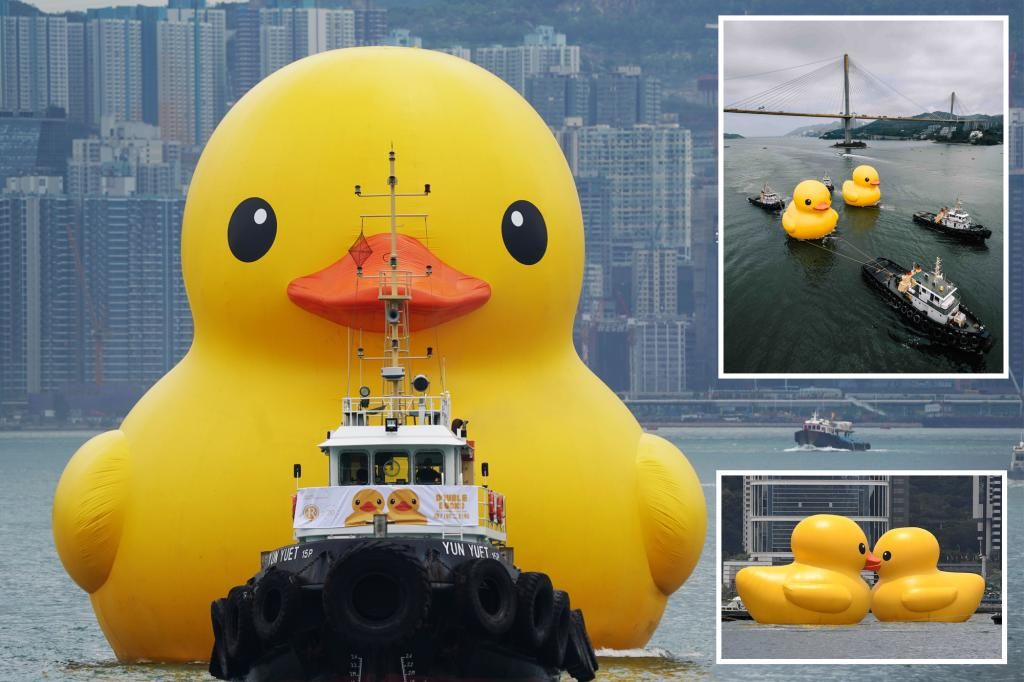Florentijn Hofman's 'Double Duck' deflates in Hong Kong
The situation took the air out of a fun day.
One of two giant rubber ducks on display in Hong Kong’s Victoria Harbor as part of an art installation deflated on Saturday.
The two nearly 60-foot rubber “Double Ducks” — who even have their own Instagram handle — were unveiled on Friday and slated to float in the harbor for two weeks.
“It’s a pity. I originally thought I could see two rubber ducks,” said Moon Lam, 72, who came to the harbor decked out in rubber duck-themed clothing and accessories.
The creation is a brainchild of Dutch artist Florentijn Hofman, who specializes in large urban art installations.
He’s created pieces featuring penguins, monkeys and bears, but his work with ducks is by far the most popular.
The bright yellow bobbers are part of a series that he has brought around the world, starting from the Netherlands in 2007, and continuing in places like France, Brazil, Japan, New Zealand, Belgium, Australia, China and Azerbaijan.
One visited New York waters in 2015, when it appeared at the annual Oyster Bay oyster festival.
The “Double Ducks” are part of a worldwide series of installations by Dutch artist Florentijn Hofman. Courtesy AllRightsReserved/SWNS
Hofman’s work last visited Hong Kong in 2013, when he placed a single duck in Victoria Harbor.
Before deflategate, he was hopeful that his work would again bring joy to the city.
“I hope it will bring as much pleasure as it did in the past and in a world where we suffered from a pandemic, wars and political situation, I think it’s the right moment to bring back the double luck,” he said.
It remains unclear on what caused the duck to deflate. Xinhua/Sipa USA
The floating sculptures are made of PVC and kept inflated by a fan on a supporting barge.
It remains unclear on what caused the duck to go limp Saturday.
Some onlookers saw a silver lining in the mishap.
“We hoped to see two ducks, but it’s also cute that one deflated,” tourist Tiffany Chen said. “Maybe because it’s too hot in Hong Kong.”
With Post Wires
Source: New York Post


